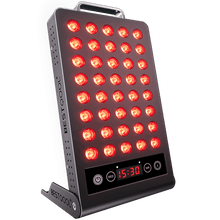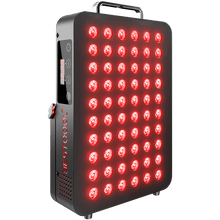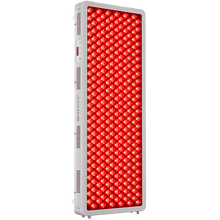f you have melasma-darkened patches of skin that can be both frustrating and difficult to get rid of-you might be searching for some potent treatments that don't involve harsh chemicals or invasive procedures. One potential treatment that picked up interest lately is red light therapy. But what is melasma, exactly? How does red light therapy work? And can it really lighten these spots? Let's dive into the science behind red light therapy and how it could change the game for those suffering from melasma.

What Is Melasma?
Melasma is a common skin condition characterized by dark-colored irregularly-shaped patches on any area of the face but mostly occurring on areas such as the cheeks, forehead, nose, and upper lip. This condition is more common in women than men-especially during pregnancy or while on oral contraception. The condition often gets triggered due to:
- Hormonal changes during pregnancy, birth control pills, or hormone replacement therapy, can also stimulate melanin, the skin's pigment.
- UV radiation from the sun will stimulate melanocytes, release more melanin, and worsen melasma even further. This will lead to the darkening of already existing patches by making them more noticeable.
- The presence of a family history of melasma increases the risk of its occurrence, thus indicating its genetic origin. Other Triggers: Stress, some medications, and irritating skin products can also lead to the onset or aggravation of melasma.
What Is Red Light Therapy?
Red light therapy (RLT) works by exposing the skin to low-level red light wavelengths, typically between 630-850 nanometers. Red light is well-absorbed into the skin and penetrates to a cellular level; it will then stimulate many of the biological processes. In sharp contrast to other modes of light therapy, RLT does not have invasive properties, nor does it contain UV rays that could exacerbate pathologies of the skin.
Science Behind Red Light Therapy
Now, to understand why red light could result in therapeutic success against melasma, let's unbundle its mechanisms One of the defining characteristics of melasma is an overproduction of melanin, which causes spots on the skin to darken. Red light therapy regulates this overproduction by influencing skin cellular processes. The light enhances the mitochondria of skin cells, enhancing their energy and energizing their function. This improved cellular environment thus refines the balance in melanin levels and tames hyperpigmentation. Melasma is an underlying inflammation that can further exacerbate the discoloration. Since red light therapy has anti-inflammatory properties, it can help soothe your skin and reduce inflammation. When there is a decrease in inflammatory responses, red light therapy helps reduce the appearance of melasma spots.
How Red Light Therapy Benefits Melasma
Gradual Fading and Lightening of Melasma Spots
One of the most striking advantages of red light therapy is its gradual ability to fade and lighten melasma spots. Given that some treatments can be overly aggressive, further irritating or peeling the skin, red light therapy takes a much gentler approach. Dark spots, on the spot, improve remarkably in their appearance once one has used it consistently over some time.
Improving Skin Tone and Evening Out Discoloration
Melasma commonly presents with skin patches and uneven tone. Studies have shown that 675 nm red light treatment evens out the tone by stimulating cellular repair and, in turn, improving the health of your skin to reduce the visibility of melasma spots.
Reducing Inflammation and Irritation
Melasma can provoke inflammation and irritation; hence, the condition may worsen. The anti-inflammatory action of red light therapy will calm the skin and bring down redness and irritation, altogether making this cosmetic condition more comfortable and less visible.
Increasing the Cell Turnover and Production of Collagen in Skin Cells
When used consistently, red light therapy will spike skin cell turnover, therefore ridding the body of damaged cells in favor of new and healthy ones. Moreover, by increasing collagen production, red light therapy enables enhanced elasticity and strength of the skin, culminating in smoother and healthier-looking complexions.

Using Red Light Therapy for Melasma: Step-by-Step Instructions
- Start bychoosing the proper device that will be used at home for red light therapy. Ensure the wavelength is between 630 and 850 nanometers, but most importantly, be designed for skin treatments.
- Do a thorough cleansing of your skin, removing makeup, dirt, and oil. This is done to ensure that light will penetrate effectively without any barriers.
- Place the unit 3" to 6" from your skin. Use it for the amount of time and at the frequency suggested by the manufacturer. Typical session times are 5 to 15 minutes in duration, 3 to 5 times per week.
- Make a reason to incorporate red light therapy in one of your skincare routines for effective results, whether day or night and be consistent. Results may take a number of weeks to show, so patience is necessary.
- Upgrade the red light treatment by incorporating other gentle treatments to have better results. These can include vitamin C serums or some gentle exfoliants. Secondly, take good care of your skin when exposed to too much sun and maintain a healthy diet that is full of antioxidants that support skin health.
Ready for Red Light Therapy? Safety Tips to Follow
Starting a new skincare treatment can be exciting, but it's important to ease into it to make sure it's a good fit for you. Here's how you can use red light therapy safely and effectively:
- Patch Test First: Before fully starting, do a small test by applying the red light to just a small part of your skin. This way, if your skin has a negative reaction, it won't be all over.
- Stay Moisturized: Keep your skin moisturized with products that match your skin type. Moisturizing helps prepare your skin for red light therapy and can lead to better results.
- Balance Over Excess:More isn't always better. Use red light therapy as often as recommended-this is usually several times per week. This helps avoid any irritation or unwanted side effects from too much exposure.
- Consult a Dermatologist: Talk to a dermatologist before beginning, especially if you have sensitive skin or another skin condition. They can provide advice specific to you and confirm whether red light therapy is a good option.
Conclusion
Melasma can be holistically and non-invasively managed using red light therapy. It slowly resurfaces melasma spots, targeting the origin of melasma, like overproduction of melanin and inflammation, followed by skin repairing with collagen production, and finally gives good results for overall skin tone. So be patient, follow the guidelines, and you may find that red light therapy becomes a valuable addition to your skincare routine for combating melasma.
Reference
[1] Trivedi MK, Yang FC, Cho BK. A review of laser and light therapy in melasma. Int J Womens Dermatol. 2017 Mar 21;3(1):11-20. https://www.ncbi.nlm.nih.gov/pmc/articles/PMC5418955/
[2] Barolet D. Dual Effect of Photobiomodulation on Melasma: Downregulation of Hyperpigmentation and Enhanced Solar Resistance-A Pilot Study. J Clin Aesthet Dermatol. 2018 Apr;11(4):28-34. https://www.ncbi.nlm.nih.gov/pmc/articles/PMC5891084/
[3] Coricciati L, Gabellone M, Donne PD, Pennati BM, Zingoni T. The 675-nm wavelengthfor treating facial melasma. Skin Res Technol. 2023 Aug;29(8):e13434. https://www.ncbi.nlm.nih.gov/pmc/articles/PMC10404938/
[4] Galache TR, Sena MM, Tassinary JAF, Pavani C. Photobiomodulation for melasma treatment: Integrative review and state of the art. Photodermatol Photoimmunol Photomed. 2024 Jan;40(1):e12935. https://pubmed.ncbi.nlm.nih.gov/38018017/
Read More
- Red Light Therapy| Improve Sleep & Wellness – BESTQOOL
- Red Light Therapy | Unlock Wellness & Beauty Benefits – BESTQOOL
- Red Light Therapy Dosing Guide – BESTQOOL
- Red Light Therapy for Newborn Sleep | Enhance Baby's Rest – BESTQOOL
- Immune Resilience: Red Light Therapy's Potential in Boosting Immunity – BESTQOOL














 Small
Small

 Moderate
Moderate

 Moderate
Moderate

 Moderate
Moderate

 Full
Full



